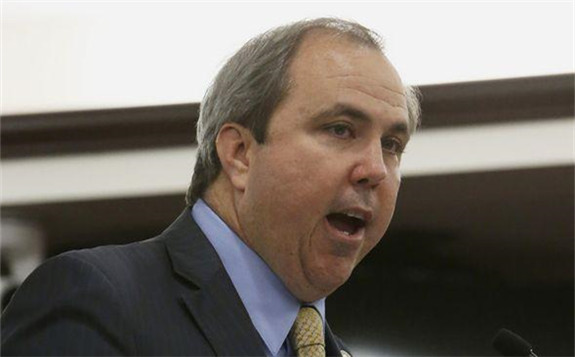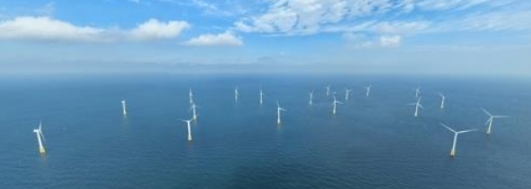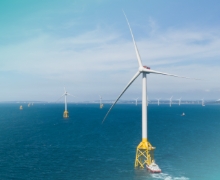
Florida could soon have a more hurricane-resilient energy grid – along with higher electric bills and heftier profits for utilities – under a bill that has been quickly moving through the Legislature.
Utilities are pushing the measure as an answer to the public outcry after Hurricane Irma knocked out power to two-thirds of the state in 2017, and subsequent storms also resulted in significant outages.
Irma prompted many to question whether Florida’s electric grid is strong enough. Some called for putting more power lines underground and out of the reach of hurricane winds.
But burying the electric grid is costly and utility companies want to be able to pass that cost on to consumers. The cost-recovery method being advanced by the industry has some consumer advocates alarmed.
Currently, electric utilities receive payment for their storm-protection efforts through their base rates, which typically are set every three to four years. The base rate process takes into account all the revenues and expenses utilities have, and weighs them against each other to determine a fair rate to charge consumers. The rate requests are heavily scrutinized and utilities aren’t guaranteed to recover all of their costs.
The legislation (HB 797 and SB 796) sponsored by state Sen. Joe Gruters, R-Sarasota, creates a separate cost recovery “clause” for Florida’s investor-owned utilities just for storm-hardening, which would allow the utilities to go before Florida’s Public Service Commission every year and ask to raise rates to put power lines underground and do other infrastructure improvements aimed at making the electric grid more resilient.
Each of these rate requests includes a built-in profit margin that could help boost the companies’ annual profits. And J.R. Kelly, who serves as the official consumer advocate for Florida electric customers, said the utilities automatically recover their costs as long as they’re deemed “prudent and reasonable.” Under the legislation, storm-hardening expenses would be considered prudent as long as the infrastructure improvements are outlined in a utility’s storm protection plan approved by the PSC.
“When you start pulling things out (of the base rate) ... and you put them into a clause and say you automatically get to recover this then the utility is guaranteed to recover that,” said Kelly, the state’s public counsel. “Accounting wise it increases their profits because it’s not part of their base rates — it basically allows them to earn a little bit more in the process. They’re guaranteed to recover 100 percent of those expenses as long as they’re prudent and reasonable.”
Critics say the bill will lead to windfall profits for utilities and higher costs for consumers, many of whom wouldn’t immediately benefit from the infrastructure improvements because only a small portion of each utility’s service area would see such investments each year.
But supporters argue that the costs will be offset by the benefits of having a more resilient electric grid, including avoiding the economic losses caused by extended power outages. Businesses lose money and employees lose wages when companies are shuttered for extended periods because of outages.
“There’s no question there’s going to be a cost to it but I think the benefits far outweigh the costs,” said Gruters, noting that the economic loses in the days immediately after Irma were substantial.
Gruters considers the bill a legacy achievement that would benefit the state for decades to come.
“Listen, this is a big deal,” he said. “We’re literally going to bury almost every power line in the entire state. This is a big win for Florida and it’s a big win to make Florida better prepared for storms moving forward.”
Gruters conceded that the legislation is being pushed by utility companies, who came to him with the idea for the bill. But he said he wouldn’t have filed it if he didn’t believe it would benefit the state.
Hurricane Irma knocked out power to 6.7 million electric customers, or about 64 percent of the state, in 2017, including 83 percent of Florida Power & Light customers in Sarasota County and 72 percent in Manatee County. It took 12 days for FPL to fully restore electricity in Sarasota and Manatee counties.
The massive power outage caused by the storm was a major inconvenience that proved life-threatening for some, and since then state leaders have been exploring how to limit the severity and duration of similar events in the future
“It literally took three weeks to get everything back to normal and it’s a lot of lost revenue,” Gruters said.
Nobody disputes that Florida should be taking additional steps to make the electric grid more resilient, but critics of Gruters’ legislation say a strong grid must be balanced against the impact on consumers.
The senior-citizen advocacy group AARP has come out against the legislation because of concerns that creating a new cost recovery clause for storm hardening would put too great a burden on utility ratepayers.
“The way this bill is written will also shift the cost more to consumers than it already is,” Zayne Smith, an associate state director for AARP in Florida, told a House committee recently.
Jon Moyle with the Florida Industrial Power Users Group, an organization that represents businesses that use large amounts of electricity, also has been speaking against the legislation at committee stops.
Moyle recently described the cost recovery clause in Gruters’ bill as a “one way financial street that only leads to increases” in electric rates. By comparison, Moyle said that keeping the storm-hardening costs in the base rates would soften the impact on utility customers.
“It’s described as the ultimate true-up,” Moyle said of base rate cases. “It’s a situation where everything’s looked at.”
Some also are questioning the focus on putting utility lines underground, which Gruters and others have described as the primary impetus behind the bill. While underground power lines aren’t affected by high winds, they’re still vulnerable to storm surge and are more difficult to repair when there’s a problem.
Communities with buried power lines can still experience power outages if other parts of the grid are knocked out by a storm, and it is costly to move overhead lines underground, leading some to argue that there should be a more targeted approach that emphasizes burying lines in certain areas where it would have the greatest impact.
A House bill analysis notes that it currently costs Florida Power & Light about $632,911 per mile to put power lines underground and the utility has 22,788 miles of overhead power lines.
“FPL wholeheartedly supports legislation which will require our state’s utilities to create robust, long-range plans for making the electric grid more resilient to extreme weather,” said FPL spokesman Chris McGrath. “We have been instituting our own hardening and resiliency measures for many years and we know that these actions have reduced overall power restoration times and costs for our customers. This bill is essential to the future of Florida’s economy.”
Under the legislation, only 4% of a utility’s overhead power lines could be buried annually to limit the cost to consumers.
If FPL buried 4% of its overhead lines it would cost ratepayers roughly $577 million a year. It would cost $14.4 billion total to eventually bury all of FPL’s existing overhead lines.
Despite those costs, the legislation has received unanimous support from Democrats and Republicans at every committee stop.
“Great bill. I went through the hurricane in 2004 and lost my power. My neighbors lost their power. My whole community lost their power,” Rep. Michael Grant, R-Port Charlotte, said during a recent committee stop. “When you come to a situation where your schools are shut down for weeks at a time and you’re importing workers from Wisconsin in the middle of August to reconnect neighborhoods and businesses, you’ll understand why this bill is so important.”
The bill has cleared three committees in the Senate and is ready for a floor vote. It will be heard in the House Commerce Committee Thursday, the final stop in that chamber before it heads to the floor.
Utility companies donate large amounts to both Republicans and Democrats and hold great sway in Tallahassee.
In February FPL gave $15,000 to a political action committee controlled by Gruters and Duke Energy gave $10,000. The PAC also collected $22,500 combined from FPL, Duke and TECO Energy last year when Gruters was running for office.
A PAC controlled by Rep. Randy Fine, who is sponsoring the bill in the House, has received $17,500 from FPL going back to 2017, including $5,000 in March during the first week of the legislative session.
“This bill is a no-brainer for the long-term fiscal health of Florida,” Fine said during a recent committee meeting.
The utilities also have given big money to PACs controlled by legislative leadership, with FPL, Duke and TECO contributing $247,500 to Senate President Bill Galvano’s Innovate Florida PAC. A PAC controlled by House Speaker Jose Oliva has received $105,000 from FPL and $20,000 from Duke.
Since 2015, Florida’s four big investor-owned utilities – FPL, Duke, TECO and Gulf Power - also have given $722,773 to the Florida Democratic Party and $3.1 million to the Republican Party of Florida.







